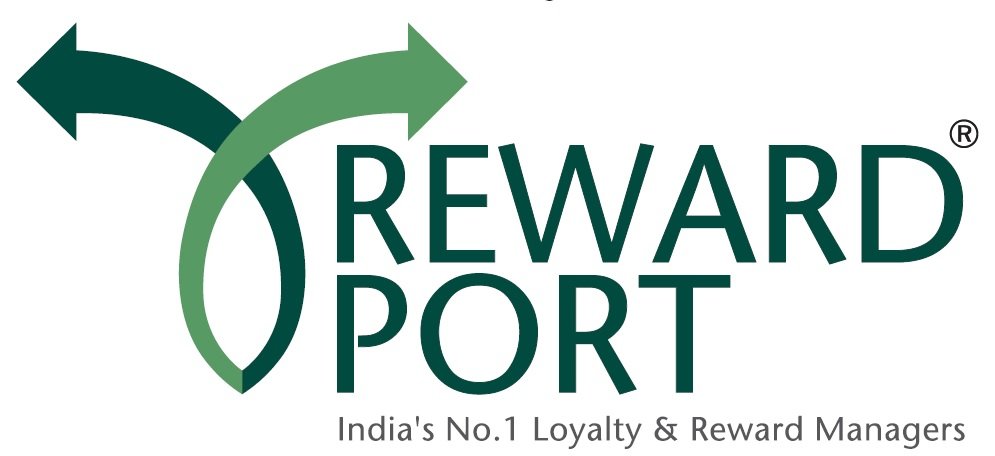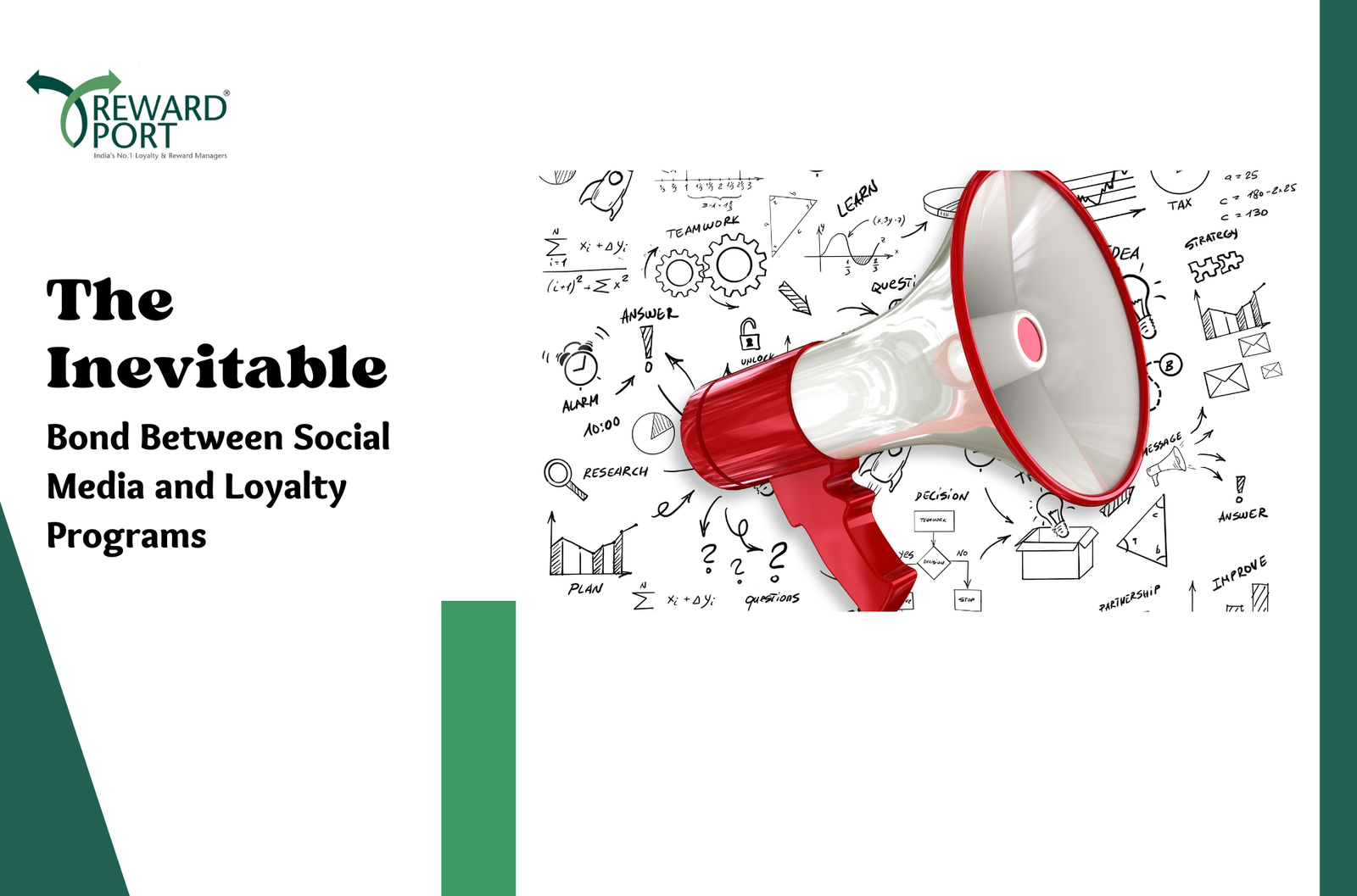
The Inevitable Bond Between Social Media and Loyalty Programs
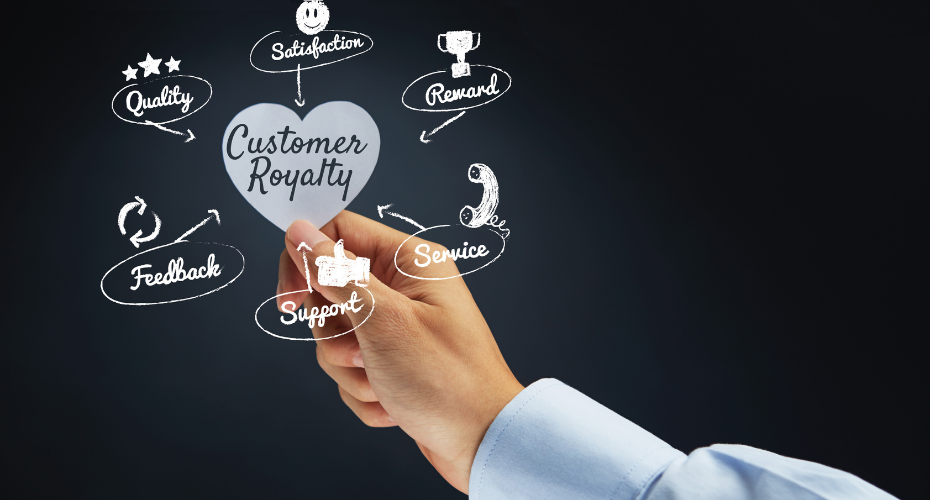
Social media has become one of the most important aspects of digital marketing today as it has been influencing all of our lives in one or the other way. If you are not using it to promote your brand, then you have been missing a lot of easy and affordable marketing opportunities. It is one of the most easiest and useful digital platforms to increase business visibility.
Loyalty programmes have started using this platform to leverage their customers since most of communications happen over mobile phones these days. The response and actions have become faster than earlier since it’s a direct approach to hit the right customer at the right time.
People receive offers as pop-ups right on their phone screens that allows them to send a response quickly. According to a consumer survey done by Deloitte Consultancy, 61% per cent of participants checks their mobile phones first after 5 minutes of waking up every morning.
This is isn’t surprising since more than 31% of the global population are connected to each other through social media. No matter where you are, thousands of people are right there for you to hear what you say on your social media pages.
As social media continues to permeate every aspect of the shopping experience, it’s quickly developing into a tool that is all about building relationships with your customers.
Each time your customers check their social media profiles, they get the opportunity to communicate directly with your brand. Count it from direct messages, reviews to refer a friend, your customers can interact with your brand 24/7 through a variety of social media platforms.
This proves that social media plays a huge role in reviving your customer retention policies. So what better way to engage your target audience than by integrating your social media strategy with your rewards program?
Customer loyalty solutions allows customers to connect to you easily and also rewards customers who buy from you frequently. It encourages customers to buy your products or use your service regularly. The encouragement comes in the form of discounts,free products, rebates or any other form of appreciation .
Brands use loyalty programs to strengthen their relationships with customers, increase in sales numbers and most importantly turning a prospective customer into a frequent buyer. A loyalty management program must ensure that the services meet the needs of the customers.
With so many users all over the world, social media is the ultimate resource to help you create curiosity about your rewards program on a global scale. You just need to determine on which platform your target is most likely o interact.
Platforms like Facebook, Instagram, Twitter, Youtube, and Snapchat are adding new features to their platforms everyday and these changes bring countless number of ways to communicate and express the value of your loyalty program through an amalgamation of creative and visual content.
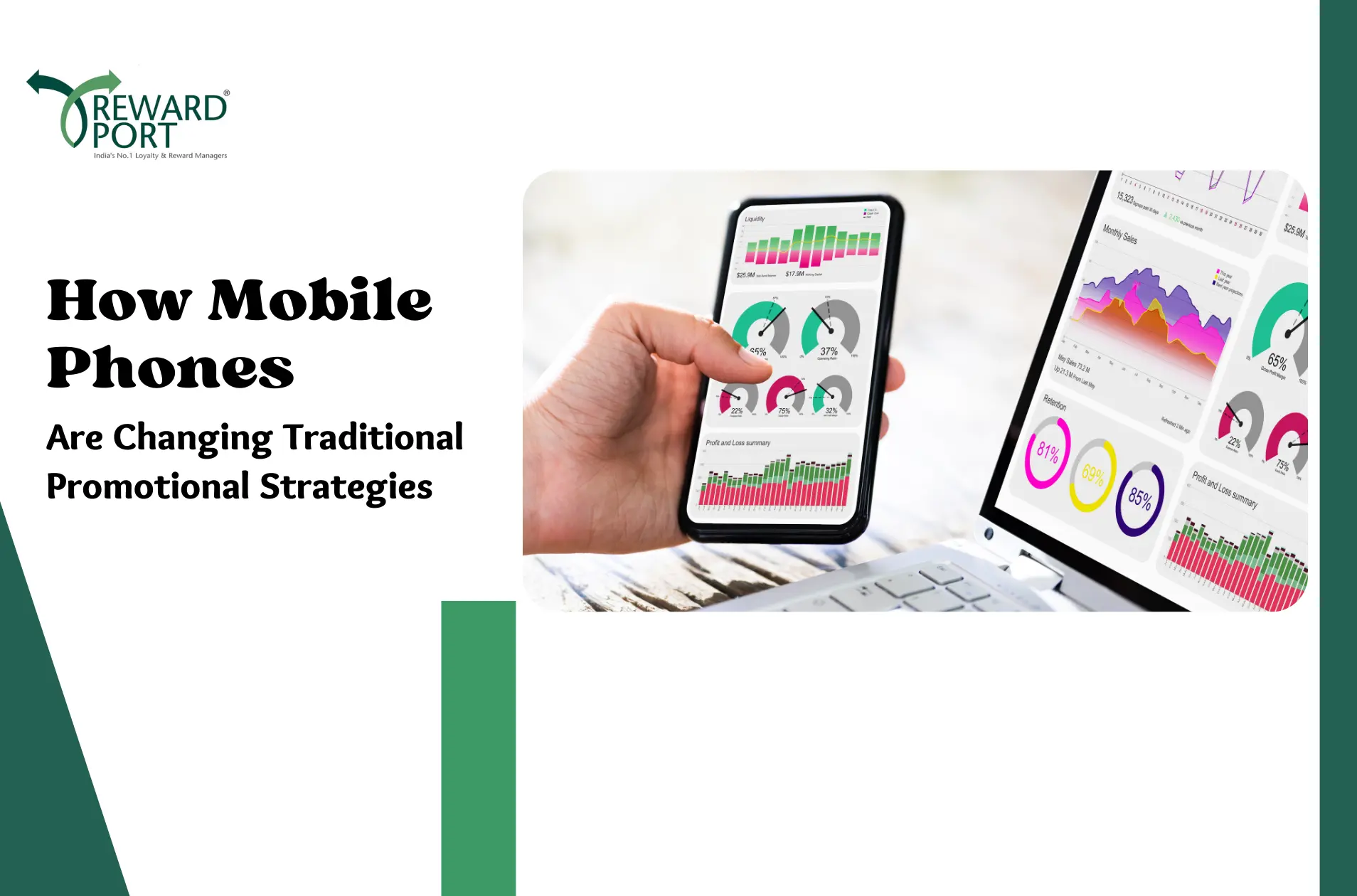
How Mobile Phones Are Changing Traditional Promotional Strategies

Surfing internet on a desktop or laptop is a thing of the past. Today, smartphones have taken the concept of surfing internet to a whole new level. And thanks to its immense progression, people are connected to each other anywhere and everywhere now.
Gone are the days of traditional promotional strategies on newspapers, magazines and traditional electronic media such as television and radio. Nowadays, people checks for Google recommendation before visiting a restaurant. Most of websites adapting mobile apps and Google inc. accepting only mobile-friendly websites.
And with this progression, traditional promotional strategies slowly started getting obsolete. In this growing digital age, planning mobile-friendly marketing strategies is a must since it’s has become the most convenient and cost-friendly way to reach your target audience.
It’s Fast and effective:
Mobile marketing strategies are comparatively easy to execute since it’s less time consuming and easily accessible. easy to plan and so the campaigns become easy to execute. More and more devices have been becoming user-friendly and with the advent usage of internet, companies are able to connect with their customers directly with texts and calls.
Through mobile promotional strategies, a business gets engaged with the right consumers who want to interact with their brand. The right set of customers receive messages, forwards it to their friends and creates an easy brand awareness.
A personalized approach
Brands establish personalized relationships with their customers through mobile marketing. Customers can choose and personalize what they receive on their phones and allow only those offers that matters to them.
Most brands promote offers through their respective apps and customers access them whenever they check their phones since no one has time to go through their mails anymore.And this is the most easiest way out there to get direct engagement with their target audience.
Also,many customer provide their feedback on social media and other e-commerce platforms and this helps the companies to decide on their future course of action.
Impact of Social media
Companies should take social media as the first option to consider while carrying out any promotional activity. The impact of social media is so huge that every small or big business houses have started handling their social media profiles seriously.
From branding to customer engagement, consumer feedback to interaction, social media has it all. Consumers can get all required information about their favourite brand by clicking on a single pop-up on their mobile screens.
In a nutshell, it’s impossible for a brand to expect a successful branding exercise without promoting it digitally. Planning your strategies according to the feedback data plays a vital role in carrying out a successful branding exercise.

Father’s Day Marketing Ideas

Despite it being a slightly low-key celebratory day, it has gained enough popularity on the social media at least. And hence, capturing a huge section of audience becomes quite easy on different social media platforms. Here are a few ways, you could cater to your employees/audience and market the idea of Father’s day to them:
Promote on Email
Irrespective of your company being the type that celebrates such days or not, or if you don’t specifically cater to the type of audience that does, promoting in-house events related to the day or events that are in correspondence to the same can be promoted within your target audience. Building up on catchy headlines/subjects for such promotional emails are highly likely to attract greater audience.
Team Up
It can be a significantly healthy and fruitful idea to have your company approach local restaurants, eateries, bars and even fitness centers and partner with them and host vents or promote deals and offers that cater to the audience who are likely to be attracted by the same. Some offers such as ‘Bring your dad & the beer’s on us’ or ‘Like father-like son fitness challenge’, etc can prove to quiet a hit amongst younger generations.
Rule on Social Media
Having set up a contest specifically promoting the bond between fathers & children can be a great idea too. Running a contest that encourages people to post selfies of themselves with their father or having to write the funniest incident they shared with their children/father can also turn out to be a successful strategy to grab attention.
Having the winners announced & distributing a promotional voucher or even a freebie of your own brand can do the company a whole world of good.
Spoilt for choice
Making your audience/customers part-take in events organised by you that celebrates father’s day & having fun games and rules set up for the same could be quite interesting.
Partnering with fashion brands or clothing lines can also be an off-beat option but still quite impressive, though mothers are more likely to be interested in the shopping part, but that’s where it gets better.
Your sale/event can have all the members of the family invited and participate in a game that requires them to select pieces of clothing each & the father gets to pick his favorite which can be given to him as a prize or at a discounted rate, etc.
These are some of the fun, interesting and practical ways to market Father’s Day to people in a more economical, interactive and impressive way for a wide range of audience.
Give your brand the edge it needs with RewardPort. Get end to end solutions for all your sales promotion needs! Team up with the best in the business to to make your most loyal customers feel rewarded with innovative loyalty programs that truly make a mark.
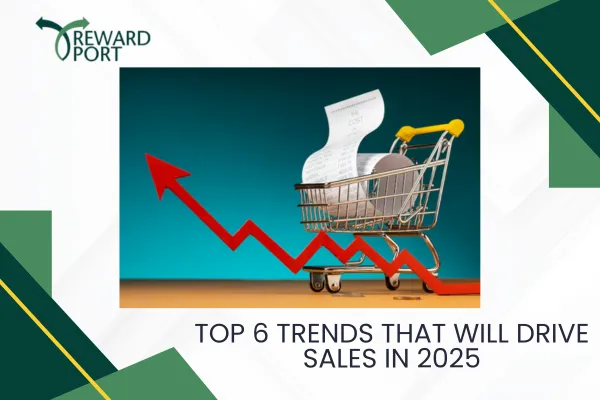
Top 5 Trends That Will Drive Sales in 2025
Sales – The word doesn’t go well with many of us. It has the tendency to pull our attention towards a lot of never ending hard work to attain a certain amount of desired result. Not sure how many of us would agree on this but every single job is somehow related to sales.
We are either getting paid because someone is selling products made by us or we are selling some products made by someone else. Believe us or not but sales are as important as the air we breathe. And with every passing year, it has been becoming more progressive.
What’s in store for sales in 2025? Videos replacing text in emails, increased focus on sales training, the rise of micro-influencers, messages replacing calls – there are many things to look forward to. Let’s find out.
1. Automation, AI, and Machine Learning
Advancements such as email intelligence are already making the sales process more efficient and it is likely to continue in 2025 as well. Big data is slowly changing the way business decisions were made earlier. There is advanced machine learning training that works on success outcome data and can help train sales development representatives(SDRs).
Their conversations can be recorded, translated, transcribed, and presented to their managers. With so much new technology merging into sales, it will be possible to figure out metric-centric selling to analyze each sales-based role and turn focus into more customer-centric approaches.
Bosch have sensors embedded in their washers and dyers. And they can actually alert the service center when some application is not functioning.
2. Hyper-Personalization
Personalization is rapidly becoming an essential part of sales and marketing. With the constantly increasing competition, brands are always looking for new ways to attract and engage customers. Hyper-personalization becomes an important aspect when it comes to customer engagement in 2025.
By offering personalized rewards and experiences, you can make your customers feel valued and encourage them to spend more on your brand. You can segment your customers based on their interests/buying behaviors and offer personalized rewards to each segment to ensure that every customer feels valued and appreciated for their purchases.
3. Rise of subject matter experts
Subject Matter Experts (SMEs) are changing the way businesses and consumers interact with each other. Modern customers don’t communicate through traditional mediums of communication when social media revolutions are in full swing. These days consumers check your social media pages first and then go to your website.
And if you don’t know your pages inside out, chances are you losing a large number of your prospective customers. SMEs, such as digital marketing specialists, can help you with deep insights and value selling. They are worth hiring and they can provide you a deep understanding of the solution landscape.
4. Customer Relationship Management (CRM)
It’s 2025 and the ‘one for all’ type of strategy doesn’t work anymore. Customers now need personalized experiences. The concept of CRM aims at gaining long-term oriented customers and it’s hugely technology driven. The primary focus of CRM is on customers rather than products.
For example, bonus points, collective numbers, and cash back options are offered to improve customer experiences and engagement rather than just selling products. Good customer experience will itself bring you more sales.
5. Videos replacing texts on mails
Video/GIF prospecting emails have been used in B2C communication for a while now but marketers never used them in a terribly targeted manner. AI is helping B2C sellers to send video-based sales emails to get through hard-to-reach decision makers working in SMEs and business houses.
Marketers are using videos to split-test among a vast list of subscribers or landing page visitors.
6. More focus on micro-influencers
After a few targeted aggressive selling from top influencers, advertisers have started to niche down and find more customer centric approaches to get products in front of consumer’s eyes. Big influencers are always concerned about who and what they recommend since they don’t want to turn off any of their followers. Thus, they leave the doors opened for micro-influencers to enter.
It is still early to predict the upcoming future since technology is ever progressing. But whatever it will be, staying updated with new updates and trends should be the main focus for every organization to drive sales.
Using traditional methods would be a failure if you don’t implement AI and machine learning in analysis. With social media platforms introducing new features such as live video streaming, and video carousel ads, the competition will become more intense.
Achieve Your Sales Goals With RewardPort
RewardPort is a leading rewards and loyalty solutions company that helps businesses boost their sales and revenue by improving the experiences of different business prospects, including customers and channel partners. The team of marketing experts at RewardPort can help you design effective sales promotions or loyalty programs for your B2B or B2C customers. The team ensures that your program aligns with your marketing goals for maximum effectiveness.
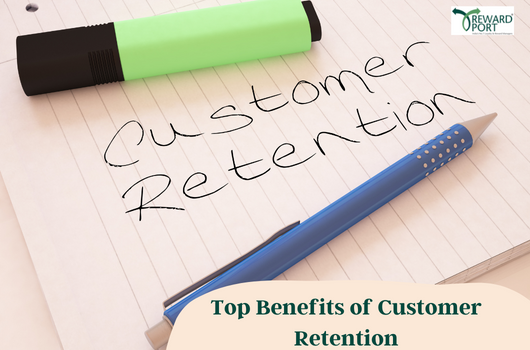
Top benefits of customer retention
‘Customer Retention’ or ‘Customer Acquisition’, these are the two conflicting ideas marketers face when deciding what is more important. And with so much importance given to ROI, marketers overlook the reason of just why are they in business- that is to serve the customers.
Old school marketers used a multichannel wide net marketing strategy to reach out to more number of prospects, however much like the definition of this strategy has changed, so has this mindset developed.
Multichannel marketers now see that it’s about using different touchpoints to interact with customers and create a more personalized experience.
As alluring as customer acquisition may seem, the truth is that it is important to invest time, effort and resources in maintaining a relationship once the customers are on board. Customer loyalty and brand loyalty initiatives facilitate companies to retain customers, beginning from the first contact one has with the company and endures throughout the period of the relationship.
In this article, we’ll make the case for customer retention and explain why it deserves the same amount of focus as acquiring new ones:
1. Low Marketing Cost
Acquiring new customers requires a lot of resources, efforts, and expenses. By focusing the marketing strategies on existing customers, customers who show a demonstrable interest in the product and the willingness to buy increases the chances of converting them and making a sale.
This not only significantly reduces the ad spend but also is a chance to showcase the brand’s commitment to rewarding the customer’s loyalty.
2. Loyal Customers Boost Sales
Loyal customers have a relationship with the company and trust the brand more than new customers do. Since a current customer has been with the brand for some time and has experienced the product or service first-hand, they’re more likely to upgrade or make a repeat purchase. Also, loyal customers are better at word of mouth and so your customer acquisition costs decrease.
3. Improve Brand Image
Brand Image is the customer’s interpretation of the product and services of a brand. A positive brand image helps businesses acquire new customers, cross-sell and upsell and reduces marketing cost.
One of the best things about customer retention is that the brand gets an idea of who the customers are, what they want and the data collected facilitates in creating personalized and targeted promotions to maximize chances of success. It’s impossible to overstate the vitality of a brand profile, as prospects connect with it directly and build a relationship.
4. Retention equals acquisition
A price cannot be put on customer loyalty and can even result in the further acquisition of customers for the brand. Word of mouth or WOM is not only a free advertising tool but possibly one of the most credible forms of advertising.
It’s a fact, that customers will talk and prospects will listen. Happy customers will give positive referrals will which in turn increase the profitability of the company. Acquisition can also be increased through retention by giving incentives to existing customers when they refer the brand to family, friends, and acquaintances.
In today’s competitive market, it is really difficult to differentiate your brand from its competitors. Arguably the most important driver of a company’s good health is customer satisfaction and retention.
A loyal and satisfied customer is more important than one who is not. While closing new business might be exhilarating, your company won’t truly advance and grow without retaining your current customers as well. The bottom line is to not lose sight of the existing customers in pursuit of new ones and it’ll definitely pay off.
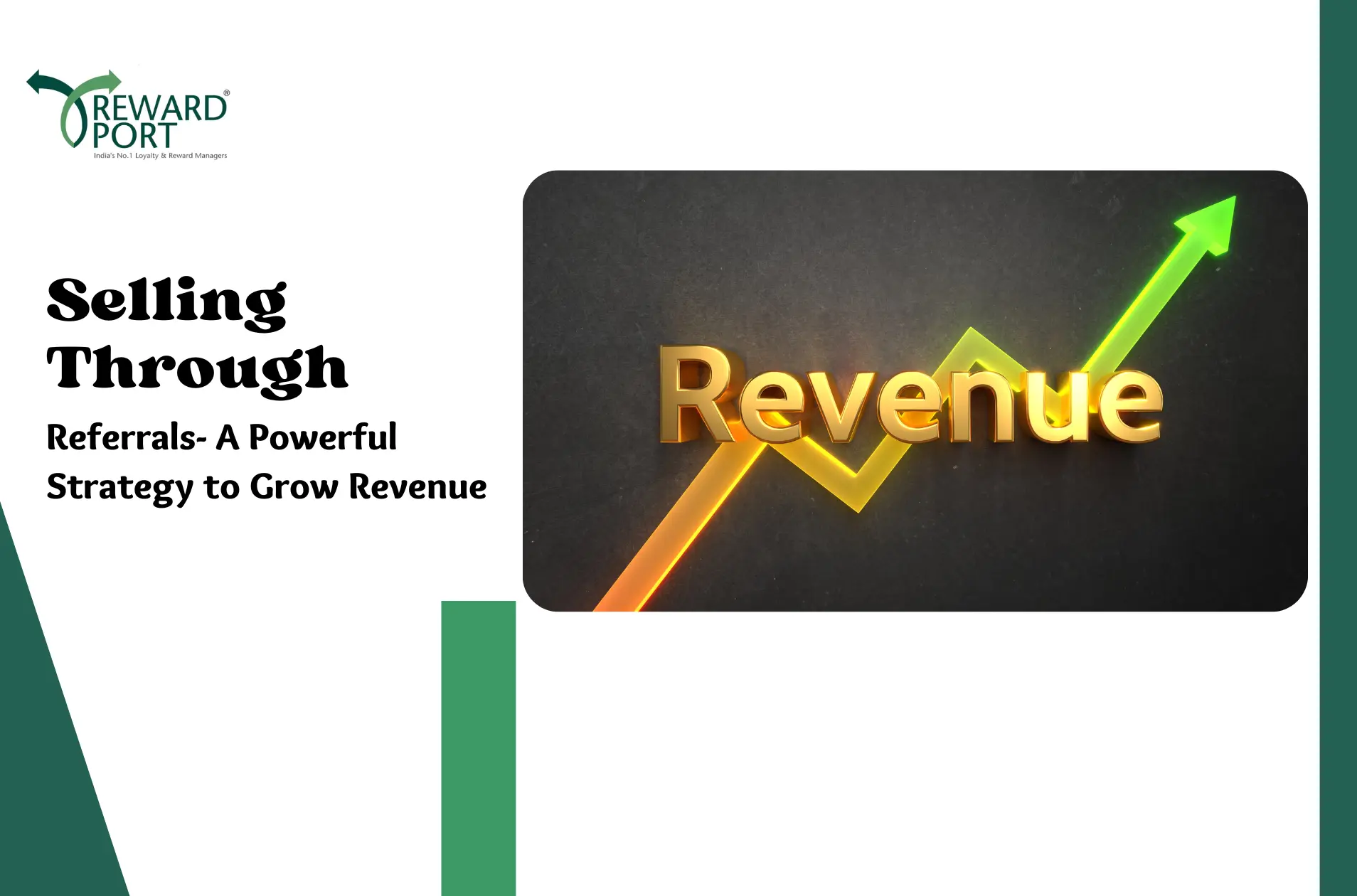
Selling Through Referrals- A Powerful Strategy to Grow Revenue
There are a number of sales strategies, but it is no secret that selling through referrals is one of the most effective technique to acquire new business. In simple words out a referral is a sales lead that comes from a customer, basically an intermediary. Sales referrals help bridge the gap between the product and the referred product and hence they provide great value to the brand.
Why Referrals? – The Only Leads That Count
If you love sales, stop the time-wasting, irrelevant, unproductive, frustrating prospecting activities you think you should be doing. Stop sorting leads into cold, warm, and hot. There’s only one kind of lead that should be in your pipeline. Only one kind of lead that counts. Only one kind of lead that management cares about. Only one kind of lead you should care about.
That’s hot leads—the kind you source through referrals from trusted allies.
The Returns – The ROI of Referrals
Every seller agrees that referral selling is, hands down, the most effective prospecting strategy. When you prospect through referrals:
- You bypass the gatekeeper and score meetings with decision-makers every time.
- Your prospects are pre-sold on your ability to deliver results.
- You’ve already earned trust and credibility with your prospects.
- You convert prospects into clients at least 50 percent of the time (usually more than 70 percent).
- You land clients who become ideal referral sources for new business.
- You score more new clients from fewer leads (because all of your leads are qualified).
- You ace out your competition.
The Process
1. Start a monthly advocate program
Once a year, do a customer genealogy to see who or what was responsible for all the additions to your customer base. Odds are, you’ll find between 5-20 primary referral sources, ranging from current clients to friends, partners and suppliers.
Make an “advocate list” of these active referral sources, and develop a concrete plan to keep in touch with them on a regular basis.
2. Develop a culture of referrals
Another approach that can help you develop a steady stream of referrals is to ask questions that benefit your customer first. One Engage customer doubled her referrals simply by asking the following client-focused question at the end of every client meeting:
“Now… how can I help you?”
The Practice – Referral Selling is Common Sense, but Not Common Practice
The business case for referrals is loud and clear:
- Decision makers will always meet with a referral from someone they know and trust.
- If your competition gets to the decision-maker first, you’re out of the game.
- When you get the referral introduction, you win.
No other sales or marketing strategy delivers such powerful, predictable results. Yet, referrals are the missing link in every company’s business-development strategy.
Ninety-five percent of companies do not have a written referral-selling strategy, written weekly referral goals, referral-selling skills, accountability for results, or a system to track and measure referrals.
It’s time to make referrals the way you sell. Fill your pipeline with only HOT referral prospects, and you’ll never have to worry about hitting your numbers again.
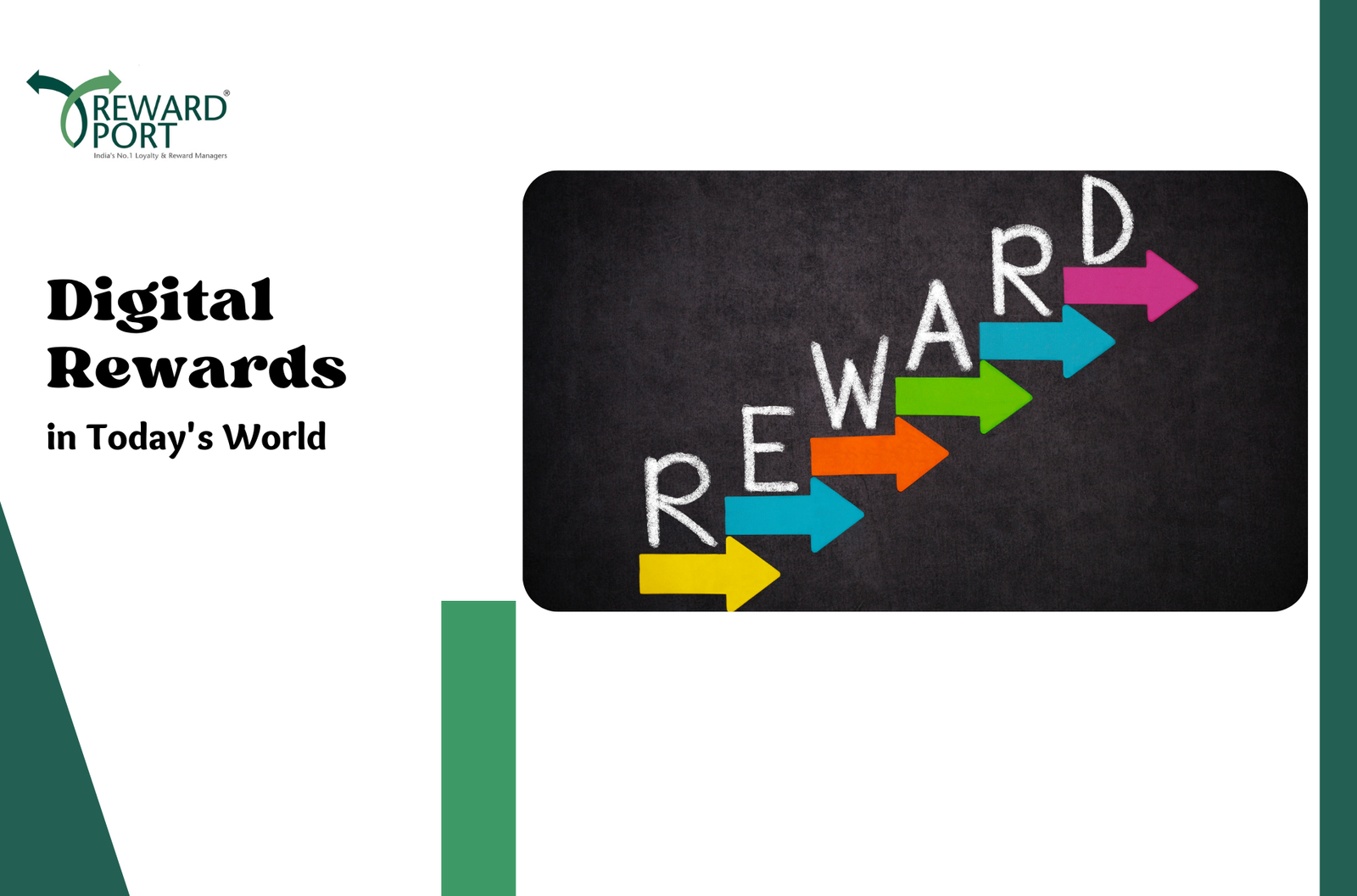
Digital Rewards in Today’s World
Brands have been utilizing loyalty and rewards program within their customer community to keep their customers happy and well away from competition. From loyalty cards, discount coupons to scratch & win offers, brands have been using rewards as an incentive to create a customer base and also keep them loyal to the brand.
In the new digital age, such rewards have been upgraded. Digital rewards are the new ‘in’ thing that bring many advantages to both the customer and the brand. From making it easier for the customers to get their rewards to spreading the word about a brand, digital rewards have given the marketplace a new tool to expand brand reach and loyalty.
Digital Rewards are Both Diverse and Abundant. These are a few up-and-coming rewards that are catching the eye of the marketers:
1. E-Gifts
According to a study by Mercator Advisory Group, it was found that in 2015 most of the money spent on gift cards was redeemed as eGifts. With the heavy increase in digital buying, it makes more sense for brands to motivate customers through eGifts.
Moreover, brands can also use eGifts to rewards employees to acknowledge their hard work on projects or commemorate special occasions. This builds the confidence in the employees and helps with brand loyalty.
2. Coupons and codes
With greater numbers opting for online buying, it makes sense for brands to give their offers and discounts in the virtual world. Coupons and codes that are sent exclusively to loyal customers makes them feel special and helps retain them.
3. Mobile wallets
Incentives like cash backs and discounts, mobile wallets have taken online marketing by storm. Creating a niche where customers are incentivised for their buying behaviour has only increased the appeal of mobile wallets.
Benefits of Digital Rewards Program
1. Increases the brand’s value
The power of digital rewards is that it gives the customer a sense of empowerment. With every amount they save or a prize they win, it helps build an image of a brand that it is not in business for the profits. It builds the image of a brand that genuinely cares about its customers.
2. Provides the customers with more choices
The brand gives the customers the option of choosing the kind of rewards they want. Either it would be as loyalty points that can be redeemed for discounts or gifts or in the form of promotional codes that are given to an exclusive customer community.
3. Customised rewards
Each reward program is made around the customer, their preferences, previous encounters with the brand and their redemption history. This makes the program more relevant and useful to the customer.
4. Instant gratification
Unlike the days when one had to send a letter to a brand with a token to get a gift, the digital rewards program helps both brands and customers get instant rewards. As soon as a customer provides a preferred action (like, tweet), the customer is provided with their reward. It needs less effort from the customer too.
5. Get rewarded anytime, anywhere
There is no limit to the application of digital rewards. People can be rewarded just by signing up for a newsletter and this can be done from anywhere. Because of the high mobility of the digital market, people can redeem their rewards just about anywhere.
6. Brings positive interaction between brand and customer
Everybody likes free gifts. Digital rewards help people collect more rewards doing what they do the most nowadays – being a part of the social media sphere. Reward programs also help in spreading the news about a brand since people share the newest offers with their friends and family.
7. Incentive to be a loyal customer
With the reward point application, people tend to stay loyal customers to get greater rewards over time. But the rewards need to be good enough to keep the customers interested.
8. Helps engage on the social media
Facebook and Twitter are where most of a brand’s customer base is situated. Potential customers also reside in the digital sphere. Having current customers talk about a brand on their social media helps in increasing exposure and value. Digital rewards do just that by giving customers freebies when they engage with the brand on social media.
9. Cost-effective
The cost of setting up a digital rewards platform takes less money than the traditional card-based loyalty programs. It is also easier for customers to check-up on their points and look for other offers that are available.
As can be seen, ‘digital rewards’ is the new mantra to creating a brand identity that is more personal and effective.
With RewardPort programs, your brand gets higher visibility among its customers.
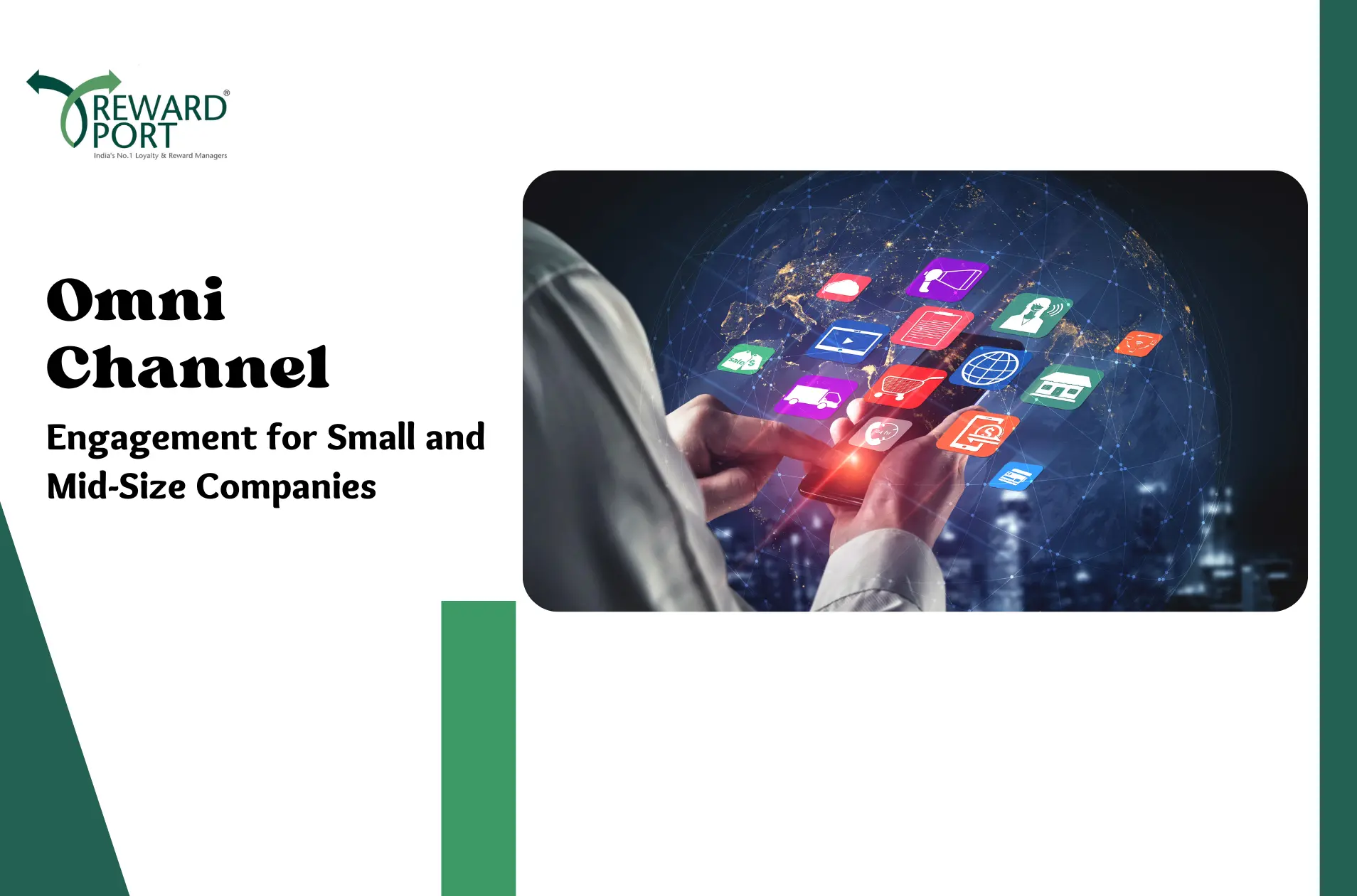
Omni Channel Engagement for Small and Mid-Size Companies
A recent study showed that customers are 58 percent more likely to tell others about their experience with a brand than they would have done five years ago. One important outlet for this exchange is the social sphere which gives consumers and businesses the opportunity to reach lots of people.
As the taste of consumers align with new market contexts, businesses must look for applicable ways to engage them beyond building traditional relationships.
Most customers expect their vendors to engage with them through digital channels. Interestingly, it is not just one channel but an Omni channel approach. This includes the social media, the web, email and other channels.
Small and Mid-size companies must take advantage of these new outlets to drive their brand. The technological and demographic changes that are sweeping across the economic landscape have changed the playing field.
Most customers prefer having their questions or problems resolved without needing to talk with a customer service agent. Furthermore, customers want to engage with a brand on their own terms; either through human interaction or a digital channel.
Small and Mid-size organizations that do not offer multiple engagement channels may sabotage their relationship with their customers or remain at a competitive disadvantage.
It is important to have a portfolio of services that connect with your customers when and where they want. The Human and digital channels of interaction must be properly optimized.
Every business can get a virtual receptionist team which can double as a virtual assistant. They would screen and transfer calls to a representative of a small business based on agreed schedules. Beyond the administrative functions of this team, they can process orders, make outbound calls, answer customer service questions and schedule appointments.
Another important platform is to run an effective digital engagement system. A good digital platform allows your customers to be educated on your business and product offers, amplify the sales process, resolve service issues, connect with prospects, answer customer questions and so much more.
When your Omni channel platform gives an outstanding experience to your customers, they ultimately become your brand advocates. It is essential to buttress the fact that great customer service occurs on multiple fronts.
There is no leading brand that can retain a large share of the market by using one channel to reach its audience. Customers need a relevant, compelling and consistent service to remain loyal to a brand. When your business has many advocates pushing its case in the market, it creates a positive impact on your bottom-line.
On the long run, one positive customer experience reduces the number of service inquiries that you get. The customers who are loyal to your brand begin to share their good times with others. The place of good customer service goes beyond the one on one relationship you share with your customers.
It is important to entrench your brand and connect with your market through the multiple channels that are available. With a careful forecast, investment and plan, any business can be able to position their brand as leaders with a viable Omni channel framework.

How to get rid of your excess inventory from retail shelves?
Available statistic shows that about 20 to 40% of most business’ capital is tied up in inventory. This portends that any business that mismanages its inventory levels even to a small degree can have a huge challenge on their hands. It can affect their capacity to operate effectively and it can place a huge burden on the Company’s finances.
The more inventory any business holds the higher the likelihood of running into costly issues such as tampering, theft, damage and stock excesses, obsolescence and so much more. Also, excess inventory on retail shelves can keep you at the mercy of market fluctuations in commodity value.
Things You Can do to Get rid of Excess Inventory From Retail Shelves:
1. Flow with the Market
When the market value of a good dips significantly below what you paid when you were acquiring them, keeping hold of a sizeable quantity of those goods can affect your business. As any effective inventory manager will admit, there is no way to completely insulate yourself from overstock.
However, you can run with a plan that helps you reduce your inventory to optimum levels. This would also aid the financial state of your business and position you for other great prospects.
The major goal of controlling your inventory level is to ensure you have enough to match the fluctuations in customer demand. You do not need to tie your cash in maintaining unnecessary stock. You can reduce inventory by communicating effectively down the supply chain.
The engagements at each stage must be in sync and data driven. This will ensure that goods reach your customers without interruption while the safety stock requirements will be kept to a minimum. Some organizations use inventory management software to fulfill this role.
Every process manager across the distribution channel is can be properly positioned to work with up to date data which creates effectiveness.
2. Get rid of Surplus or Obsolete Inventory
Inventory management software can help a business to identify obsolete or surplus inventory. It is important to earmark the most effective way of taking out obsolete inventory. The long term damage of holding in unnecessary stock outweighs the damage of holding on to it in the short term.
There are a number of channels which businesses can use to dispose unwanted inventory. The first thing to do is to categorize the stock that needs to be scrapped or thrown away, those that can be sold off and the stock that can be used within the organization.
You can also negotiate the option of returning surplus stock to the supplier. Closeout and special discount offers is a good avenue to increase customer demand and move excess inventory. Goods which are sold at a discount in an International market allow the retailer to get back part of his investment while moving the stock.
As a last resort, it may be vital to give the goods to a cause or charity which will create some goodwill in the community or you can simply scrap them.
It is important for a business to invest in running with a good inventory management system. This would help to reduce the challenges in your supply chain while improving your profit margins.
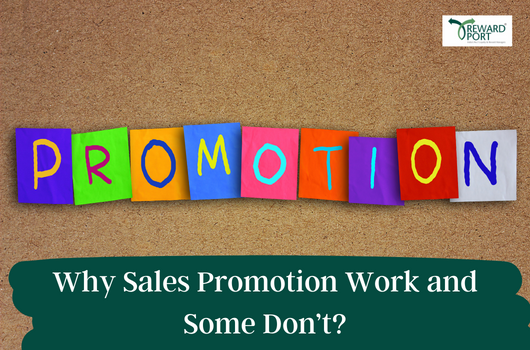
Why Sales Promotion Work and Some Don’t?
Every sales promotion begins with a business or brand making the right offer. This is true of one-time marketing concepts that help in boosting your short-term revenue or expanding your business.
The ideal sales promotion offer needs to have the following components:
1. Align with your competitive edge
2. Creates real value for your clients or customers
3. It is relevant
The usual strategy is to go for conventional offers like Discounts , extra of the same product, a related product by the same company or a freebie of excess inventory. Lets look at each aspect
1. Discounts – these work always, but to a extent. A brand cannot forever be giving discounts and get identified as “discount” brand.
2. Extra of the same product – this is a slightly better strategy than giving discount as it gives a better perceived value to the customer.
3. Get a related product – Good if want to sample your new offering that does not conflict with the existing product category
4. Give a free from your excess inventory – This may save you some monies but could give the customer a wrong impression if not communicated right.
The new approach to sales promotions is to catch the fancy (and the spend) of your customers by giving them something which is aspirational and has a much higher perceived value. Two things stand out:
1. Offer a service – Run a promotion that rewards the customer with something exciting that matches the target profile like Movies, a spa experience or mobile recharge .Something that gives instant gratification and has a high perceived value and is relevant
2. Sweepstakes with assured gift – Everybody loves to win. An assured prize giveaway with a chance to win a grand prize appeals to all. A sure win gives instant gratification and gets the brand love and a chance to win big like a car / mobile phone / dream holiday keeps them engaged .
When you have decided on the sales promotion plan that you want to implement, it is important to prop up its message and communicate effectively. This is the point where many businesses miss it in their campaigns and marketing efforts. This failure usually happens in two ways:
- They do not effectively promote their program to their clients and potential customers
- They use the wrong message or marketing tools to reach their audience
- The rewards are not exciting enough
- It’s not easy to get the free gift
A close look at the first point shows that the default sales promotion drive of most businesses is to advertise. However, advertising adds to the expense that an organization incurs. The cost of running a media campaign is high and the returns may not justify the investment made. Research shows that price-sensitive shoppers may be attracted by an advert but may not return to consummate the purchase or transaction.
There are Effective Ways to Drive Sales Promotion and Some of Them Would be Discussed Below.
1. Use your Store effectively
It is ideal to make full use of your store signage to woo buyers to the products you have on offer. The employees can strengthen the stakes by mentioning the promotion to your customers. Employee stickers/tags/buttons can talk about the promotion while promotional flyers can also do a good job. Reminders on receipts or the use of an inexpensive sticker or rubber stamp can help to drive the best returns for your business.
2. Embrace the Internet:
You can give a strong voice to your Sales promotion by highlighting it on the main page of your website. You can create a page that talks about your promotion and draw in a strong following by offering freebies which can help you build lists for future marketing efforts.
3. The Telephone:
Your employees can harp on the promotion to anyone that calls your business or you can change your answering machine message to let customers know about what you are doing.
4. Email
You are sending out hundreds of emails everyday. Add the promotion to the footer. Its zero cost free media.
There are other powerful media which you can harness to generate the right results for your sales promotion. They include Flyer distribution, use of conventional media and word of mouth. It is important to get the word to as many people as you can through these channels. It is vital to mention that you can have a great sales promotion plan but without a strong marketing base to drive it; no one will know about it and this can lead to failure.
The best sales promotion is simply anchored on understanding your market and driving your plan to bring the returns you desire. There is a thin line between success and failure in this range but following some of the rules listed above would get the job done for you.

How To Create Effective Promotional Marketing Strategy in 2025
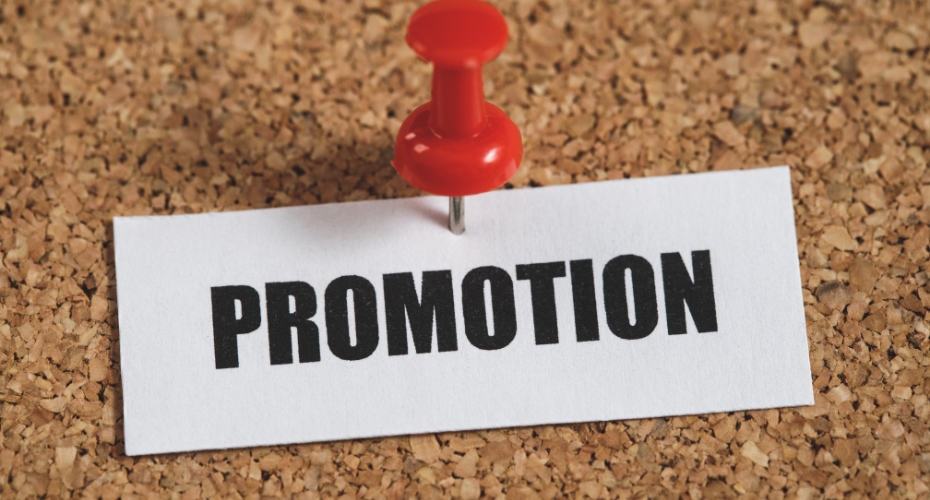
There is one Marketing question that always begs a detailed answer – What is the right way to go about planning a product promotion activity? It’s easier asked than answered. Over the many years that we have been working with Marketing divisions across Industry types, we have actually drawn up a list of 10 important issues that Managers must consider while planning a Promotion.
While they may not be in Chronological order, each point jostles for attention. This is an attempt to assist the Marketing manager build a template for every promo; remember every promo needs the same amount of consideration before an idea is finalized.
Here Are The Given Top 10 Effective Strategies for Promotional Marketing
1. Identify the Role of Incentivization
Providing added value to customers by making available an “incentive” instantly influences purchase. If the customer is convinced that he is getting more than the value he is spending on the product, it will persuade him further to make the purchase. The strategy lies in convincing the customer that he will not only receive the worth of his rupee but also supplementary benefits.
These incentives may be in the form of free samples, gifts, discount coupons, demonstrations, shows, contests etc. All these measures motivate the customers to buy more and thus, it increases sales of the product. The promotion must be able to change the perceived value or price of the product or service.
2. Communicate with your consumer – offline & online.
Social media, smart-phones and the Internet are the buzzwords of marketing of the future. The customer is becoming more and more technology-friendly and accustomed to the ways of approaching products through these media.
By making product promotions accessible via such media, the customers are significantly encouraged to utilize the benefits offered to them. Not only do these media influence the behavior of the customers, it is the swiftest and most effective way of reaching out to your befitting target-audience.
3. Collect, manage & nurture data.
Sales promotions are not only effective in the acquisition of new customers but also in the retention of your existing customer-base. It is essential to recognize the significance cultivating a relationship with your existing customer-base.
In-order to develop and nurture relationships, it is important to firstly collect and create powerful databases. Secondly, they must be managed to eliminate unusable data in order to effectively target the usable database. The customers must be made to feel their value in the company in order to extract long term loyalty.
4. Be relevant
Sales Promotions must not only be relevant to the type of product being sold but must also suit the needs of the target-audience. If the customers are able to relate to the promotion being offered are able to comprehend it effortlessly, then the chances of the promotion resulting into a sale are higher. The sales promotion must also be able to hit the consumer at a particular behavioral stage.
5. Make sure to Customize and localize
The promotions offered must be customized to suit the requirements of the customer with regards to their demographics and psychographics. The promotions must be also be designed according to the attitude & behavior of the target-audience. They must be able to provide instant gratification on a temporary basis in-order to convince the customer to take immediate and simplistic action to achieve results of the offer.
6. Clarify objective and provide tangible benefit.
The customer will only be convinced to make the purchase of the product if they feel the value they are receiving is more than the amount they are spending. The customers must be able to measure the added value they receive along with the purchase.
By offering clear objectives of the promotion, the brand is able to foster a trustworthy relationship with the customer – which is key in terms of long-term loyalty benefits.
7. Maintain timing, duration and frequency
Sales Promotions if introduced at a appropriate time can yield greater results. India is a very time driven economy; festivals, occasions and seasons are great influencers in the consumer’s purchase decisions.
The promotions must be able to provide the customers with instant gratification over a temporary period and must not be repeated too often, as the customers will then be unable to differentiate the added value of these offers in comparison to the original product.
8. Engage your customer
The customer wants to be felt important and appreciated; and if the brand recognizes this need of the consumer and nurtures it, they can witness groundbreaking results. The brand must endeavor to involve the customer in promotional activities as much as possible.
Any activity that engages the customer to interact with the brand – for instance contests, sweepstakes or coupons will instantly appeal to the customer’s psyche and induce a sense of association and bonding with your product.
9. Integrate sales promotion with the communication strategy
Sales promotion is an aspect of a promotional mix that includes –advertising, personal selling, direct marketing and public relations. While sales promotion is an effective tool itself, it must be used in accordance and relation to the other tools of the marketing strategy as well. Once the promotions are complemented by the other elements of the promotional mix, the efficiency of this tool will automatically be intensified.
10. Integrate sales promotions with social media
Sales Promotions must be run on social media such as _ Facebook, Twitter, Foursquare. Linkedin and Pinterest. Sufficient word of mouth is generated via social media that not only increases awareness but also heightens reach of the promotions.
Integration with social media immensely intensifies the effectiveness of the campaign. The reach of social media must not be overlooked and must be used effectively to create viral effect.
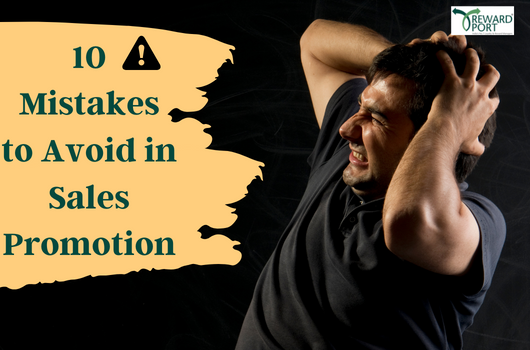
10 Mistakes to Avoid in Sales Promotion
Numbers never lie and if numbers are to be believed, take a look at following industry figures of impact of sales promotions:
- Total Reach Value: 90%
- Total Recall Value: 89%
- Positive Impression On Customer: 52%
The relevance, reach and impact of meticulously planned sales promotion on customer behavior is unsurpassable; which inversely also means that if your sales promotion is not planned well, it could negatively affect your brand and business with equal values!
So, how would you ensure a flawless sales promotion plan that affirmatively reaches and affects as many people as possible? Here are the common mistakes that you should avoid to maximize the impact and minimize the remorse:
Here Are The 10 Mistakes To Avoid In sales Promotion
1. Thinking Single Channel
Sales promotions can elevate the sales and profits dramatically in a short time. To fetch optimum outcomes of the sales promotion activity that took much of your hard work and huge capital, it is necessary that you utilize all the channels of promotion available to you. The current advancement of print and digital media offers a beautiful amalgamation to explore infinite opportunities to boost your sales and brand value.
When your consumers see you everywhere, they get inured to your brand and you gain their acceptance. Do not keep it only online (which may be fine if you are an online company) or only print promotion. Integrate all the channels ingeniously to stand ahead the crowd.
2. Not Setting A Goal Or Deadline
Launching a sales promotion program without fixed deadline or measurable goal will lead it to whole big null point. Set a start date and end date to streamline your efforts to complet everything within the stipulated time frame. This will help keeping each component of the program in track. By setting up goals, you will always have a figure in hand to achieve and to measure the success of the campaign.
3. Fixing On Presumptions
Don’t presume customer’s behavior. Never plan your sales promotions assuming that the segment you have created defines your real or limited customer base. It is very much possible that a profitable share of customers in high concentration is in the segment you do not tap your sales promotions for. Study your data patterns well to have a diverse profitability.
4. Not Solving It For Each Stakeholder
While planning your sales promotion program keep in mind how would it impact each of your stakeholder or retailers or any other patron associated to your organization. You may launch a promotional plan that attracts new customers with some special offer or benefit but would it be fair for your regular and loyal customer who may not have that benefit? Take each stakeholder into your consideration for an overall successful sales promotion program.
5. Making It Too Complex
Keeping your sales promotion plan simple makes it easy for you as well as your customers. Your customers will feel more connected and involve when the processes are simple without much complicated terms and conditions. With a simple sales promotion activity, capturing, handling and processing the data for result analysis and profit calculation gets extremely easy and effective. So, do not unnecessarily complicate things.
6. Not Keeping It Relevant
Relevancy is the essential most factor of any sales promotion program for its success and positive outcomes. Relevant program helps you in targeting your right customers and communicate with them for awareness and sales. Relevancy of the sales promotion plan also ensures that your customers are reminded about your brand or product with full intensity.
7. Communication Gap with yourTeam
For successful promotional plan, it is imperative to involve and inform all those part of your value chain that includes your team members, distributors, retailers about your plan. This provides the required thrust to pull it to an extended level for broader effect and profit.
8. Not Testing Your Assets
This is a very common mistake that is easiest to avoid. It doesn’t take much to test all your assets that you plan to consume within your promotional program to be active, available and useful. For example, you may roll on an email campaign with a broken link due to lack of adequate testing. This is a sheer waste. Avoid it.
9. Not Capturing The Data
Without capturing the data appropriately, it is impossible to measure the effectiveness and successfulness of any activity. Capture the data to realize if your plan has delivered what you expected. Capturing the data can also benefit you to apprehend new market segments and opportunities that you never thought of before.
10. Not Using The Captured Data
This is the biggest mistake companies commonly get trapped into. Before planning the next sales promotion plan, it pays largely to dig in the previously captured data to concentrate upon profitable segments along with exploring new dimensions for unconfined growth.
For a short word, make your sales promotion plan to attract new customers while also encouraging your brand power and loyal customers effectively.
These are a few common mistakes you need to be aware to ensure a flawless sales promotion. You should do everything possible to learn whatever you can about the complexities and nuances of your industry or profession–and not just once, but regularly.
By knowing the potential bottom-line of impact of your sales promotion, you’ll have the information to invest the energy necessary to host a strong flawless sales promotion that will deliver boosting results over the time period it covers.
